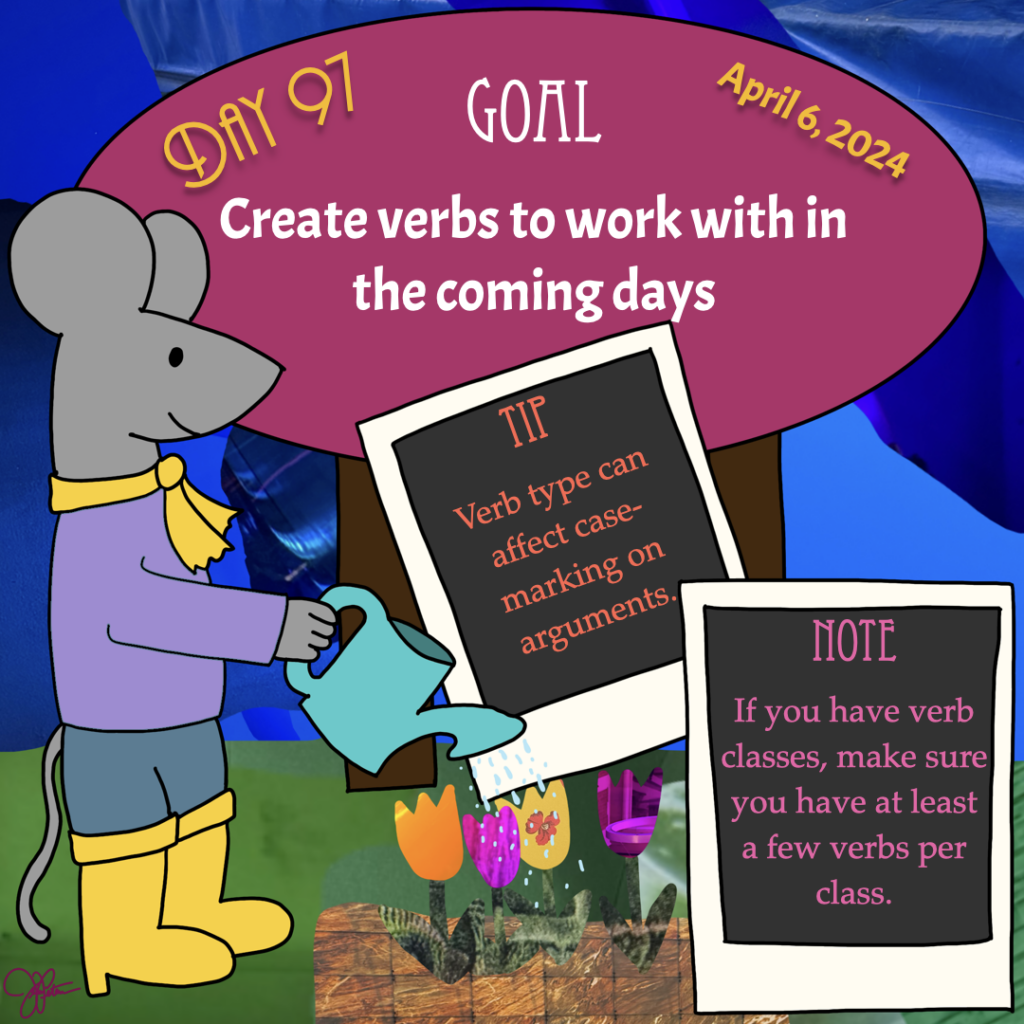
Goal: Create verbs to work with in the coming days
Note: If you have verb classes, make sure you have at least a few verbs per class.
Tip: Verb type can affect case-marking on arguments.
Work focus: Create/Make/List
Today’s goal is to create more verbs—specifically verbs that will be helpful so you can test forms as you create inflections in the coming days. If you wanted to have verb classes in your language, use today to make sure you have verbs created for each class. You can also use the day to start creating lexical sources you’ll need for T/A and/or indexing markers (which may be verbs!).
Even if you don’t have verb classes in your language (i.e. you won’t be inflecting verbs differently depending on their semantic or syntactic type), it’s good to have a variety of verb types in your language to work with, including different semantic types of verbs, like dynamic and stative verbs, and different syntactic types of verbs, like intransitive, transitive, and ditransitive. And as you work with them in the coming days and weeks, you may want to re-evaluate how your language assigns cases (if you have a case-marking language).
Not all verbs occur with the same kinds of semantic arguments—and not all verbs assign case markers in the same way. For instance, throw is a dynamic transitive verb that occurs with an agent subject and patient direct object. However, see is a dynamic transitive verb that occurs with an experiencer subject and stimulus direct object. While verbs like these are treated the same in English, you may choose to treat these verbs (and their arguments) grammatically differently in your language.
